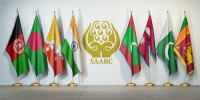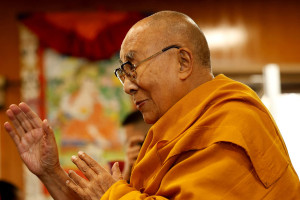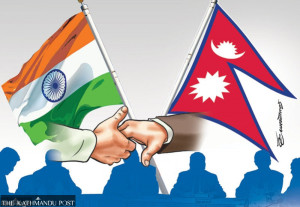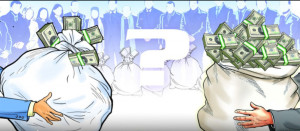Columns
The grammar of Nepali politics
The freshmen from the Discord generation will learn the grammar of Nepali politics the hard way.
Anurag Acharya
On the night of November 10, CPN-UML leader Saroj Yadav managed to get himself elected as Chief Minister of Madhesh Province inside a hotel room, bypassing the provincial assembly. Yadav’s appointment has led to violent protests across the province, with more than two-thirds of the assembly members petitioning against his appointment. The incident once again exposes Nepal’s political culture, where individual leaders are driven more by their obsession with positions of power rather than an intent to serve for public good. Mediocre but ambitious individuals are abundant, within the parties and beyond, who are ready to cut any deal to propel themselves to power. The September youth protests were a mobilisation, precisely against decades of such mediocre leadership that has plagued every institution of power in this country.
Sher Bahadur Deuba did not become Nepali Congress President for a decade, and the Prime Minister of this country five times, only because he is popular within the party. KP Sharma Oli did not become UML Chairman and four-time PM only due to his loyal comrades. Similarly, Pushpa Kamal Dahal did not rule over his party for four decades and become a three-time PM only because he was feared and revered as a firebrand leader. These leaders consolidated power by co-opting and controlling individuals and institutions, helping to set the political narratives in their favour and counter opponents both inside and outside the parliament.
Leader by association
After the restoration of the multi-party system in 1990, when Nepal’s political parties re-entered parliamentary politics, something profoundly changed in the way they interacted with other institutions. By legally unionising institutions like bureaucracy, universities, media and civil society, including other professional, ethnic and religious associations, they not only promoted leadership but also cultivated loyalty within each of these institutions. By dividing them under the party flags, these institutions were co-opted within the larger party mechanisms. The union leaders today are more dedicated to the party, rather than their own institutions and professional codes. It’s a well-oiled machine where the union elections are contested with high political stakes, and its influential leaders make a natural progression into the party leadership.
In recent years, the number of new political parties has increased in Nepal, claiming to provide a political alternative by challenging the traditional parties. In the 2017 general elections, two new political parties, Bibeksheel Nepali Party and Saajha Party, contested polls, riding on a wave of anti-corruption protests. However, popularity among the urban-educated masses did not result in their electoral success. In the 2022 polls, several more parties contested elections, challenging the dominance of the established parties. Among them, the Rastriya Swatantra Party has managed to expand its organisation across different provinces, riding on some electoral success. Janamat Party and Nagarik Unmukti Party, which emerged from provincial mobilisation, also gained some electoral success due to ethnic and caste mobilisation. But none of these parties can rival the established parties in influence and control over governing institutions, as well as social and professional associations.
It is the control over these institutions that has gradually allowed traditional parties to reclaim the political mantle and reset the narrative they had temporarily lost after the September youth protests. Many young leaders emerging out of the ‘Gen Z movement’ were themselves affiliated with the youth wings of these traditional parties. They joined the protests after frustrating attempts to break the glass ceiling created by the ageing and ailing leaders at the top.
Uneven ground
It has been a century since the British theorist and politician Harold Joseph Laski published his widely cited A Grammar of Politics, in which he made several propositions regarding the state, power and the citizens. Laski believed that power does not exclusively rest on governing state institutions, but is also distributed across other forms of associations in society.
What we saw in September is the youths from urban centres of this country challenging a kleptocratic administration by mobilising their demographic strength. The old stooges from traditional parties may not be very popular among this section of young Nepalis. But the distribution of political rent across formal and informal institutions and associations still allows them to control narratives and prolong their relevance in Nepali politics. As the country gears up for the general elections, youth leaders projecting themselves as the new alternative in Nepali politics would do well to ponder on Laski’s proposition. They must broaden their leadership ambition beyond formal governing institutions.
The lack of enterprising, honest business leaders has allowed a dishonest and monopolistic culture to thrive in the Nepali private sector. A handful of families control our economy, and increasingly our politics, through their nexus with top political leadership. Similarly, a large section of media and various professional associations have become subservient to the political class, afraid to speak truth to power and co-opted to serve the vested interests of a few leaders. Every corruption scandal in this country has implicated more bureaucrats, while their political bosses often manage to get away. There is a need for a generational change and a cultural reset across these institutions that will gradually dismantle the political nexus and loosen the monopoly of a few leaders. But this will not happen in a matter of weeks or through a single electoral cycle.
The youths of this country managed to topple an unpopular government in a single day, but the new parties and leaders are pinning their hopes on stand in an uneven playing field. Registering a party and contesting polls will be the easy part. Accessing multiple institutions of power and exercising it, however, is a different ball game. In any case, the quest for better governance is not necessarily a call for more parties and an overabundance of leaders itching to take over revolving chairs in Singha Durbar. The freshmen from the Discord generation will learn the grammar of Nepali politics the hard way.
This is the final piece of the three-part series on Nepali political parties.




 8.12°C Kathmandu
8.12°C Kathmandu















